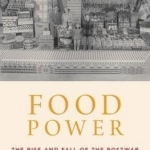Food Power: The Rise and Fall of the Postwar American Food System
BookThis item doesn’t have any media yet
2016 | History & Politics
In Food Power, Bryan L. McDonald brings together the history of food, agriculture, and foreign policy to explore the use of food to promote American national security and national interests during the first three decades of the Cold War. In the years after World War II, Americans struggled to understand how an unprecedented abundance of food could be used to best advance American goals and values. Was food a weapon, a commodity to be valued and exchanged through markets, or a substance to be provided to those in need? The use of food as an element of national power is often referred to as "food power." McDonald traces different visions of food power and shows how food was an essential part of America's postwar modernization strategy - its vision of what it meant to be a stable, secure, and technologically advanced nation. Debates during the postwar years about how food power could help the United States achieve goals such as stability, prosperity, and security were part of a larger conversation about the role of food in the security of states, communities, and individuals.
America helped build a new, postwar food system based on the steadying influence of American agricultural surpluses that helped maintain stable prices and food availability. This system averted a global-scale food crisis for almost three decades. The end of this food system in the early 1970s ushered in a much more unstable period in global food relations. Food Power argues that efforts to both interpret America's role in the world during the mid-twentieth century and to address contemporary food problems can be strengthened by understanding more fully the ways postwar American policymakers and experts sought to shape the politics of security and prosperity by linking people and places around the world through food.
Related Items:
| Published by | Oxford University Press Inc |
| Edition | Unknown |
| ISBN | 9780190600686 |
| Language | N/A |
Images And Data Courtesy Of: Oxford University Press Inc.
This content (including text, images, videos and other media) is published and used in accordance
with Fair Use.
